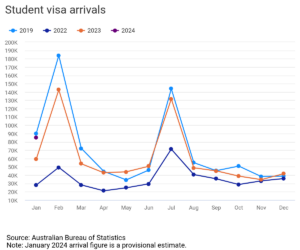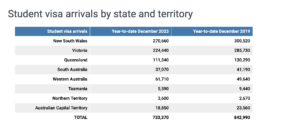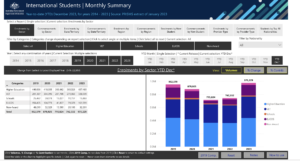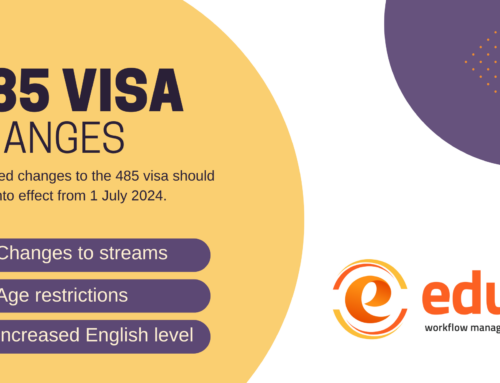International students have accounted for more than forty percent of the net migration that has occurred overseas in recent years. This is the second largest contributor to population growth, falling only behind natural resources. They are essential to the funding of universities and other educational institutions in Australia, as well as to the numerous businesses that are located in the vicinity of university precincts, and to the people who are employed by these businesses and universities.
International Education is the largest source of export income for the large Australian cities and one of the biggest generators of jobs in these two cities. When it comes to slowing down the rate at which Australia was expected to age, students have been an essential component over the past two decades. Students in Australia have contributed to the country’s status as one of the youngest developed nations on the planet, with a median age of 37. International students will play a significant role in determining the rate at which Australia’s population will age in the years to come.
A sign that Australia’s migration bubble has started to burst is the fact that the number of people in Australia who are on student visas has finally turned around after reaching its highest point of 660,000 in September 2023. The number of student visa holders living in Australia fell by 50,000 from a record 664,178 at the end of September to 612,099 at the end of November.
Student visa numbers
Total student visa arrivals in the year-to-date December 2023 were 87% of what they were in the year-to-date December 2019.
In December 2023 there were 41,670 international student arrivals to Australia, an increase of 5,830 students compared with the corresponding month of the previous year.

Student visa arrivals per state

Source: Department of Education
International students visa monthly summary

Source: Department of Education
Visa approval rates declining for some students as new immigration settings take effect
- New policy settings are being utilised by immigration officials in order to reject students who are not genuine.
- The first half of Australia’s fiscal year saw a rate of refusal for study visa applications that was higher than the rate seen in the previous three years. Almost one in five applications were denied.
- If the current rate continues, there is a possibility that there will be slightly more than 90,000 fewer students entering the country during the academic year 2023/24.
- It was projected that by the end of 2023, the international education sector would have contributed a greater amount of export revenue to the economy of Australia than it had in 2019, when it had reached a record value of $41 billion.
A new set of policies was implemented by the government of Australia in the latter half of the year 2023 with the intention of discouraging individuals who were not genuine students from exploiting loopholes in the immigration system in order to enter the country and work under the guise of studying. In the first half of Australia’s fiscal year, 19% of applicants were denied a study visa, according to data from the Department of Home Affairs. This indicates that these factors are already having an effect upon applications.
If that rate of refusal continues, it is anticipated that the number of students who are granted study visas in 2023/24 will decrease by 91,715 in comparison to 2022/23, when 577,295 visas were granted. This represents a reduction of approximately 15%:
- 10% of visas were refused in 2018/19
- 8.5% were refused in 2021/22
- 14% were refused in 2022/23
Related articles:
Comprehensive review of Australian Migration Strategy
Student visa update March 2024
New legislation to curb international education
Student visa and Temporary Graduate visa report 2022
There appears to be a focus on winding back a large number of vocational students who are enrolled in courses such as the diploma of leadership. However, the primary focus appears to be on students who are able to contribute skills to the economy of Australia.
Other aspects of Australia’s new approach to its interaction with the international sector include the following:
- Applying additional scrutiny to high-risk student applications;
- Cracking down on unscrupulous education providers;
- Bolstering the student visa integrity unit in the Department of Home Affairs to reduce misuse of Australia’s student visa system;
- Strengthening requirements for international education providers.
In the long run, the International Education sector in Australia needs to begin making preparations to become significantly smaller for the industry. This also applies to ancillary industries that rely on international students, particularly those that are located in and around university precinct environments.
Because of the lower levels of net overseas migration that have resulted, Australia’s population will age more quickly, and the point at which natural increase will transition into natural decrease (deaths will exceed births) will be brought forward.
Both the Commonwealth Government and the State Government need to initiate planning for the long-term effects that this will have on the economy and the budget.
#internationaleducation #studyaustralia #educli





Leave A Comment